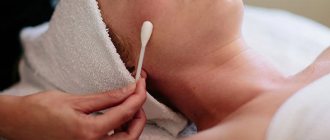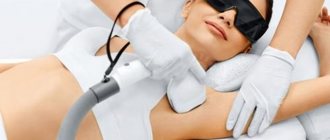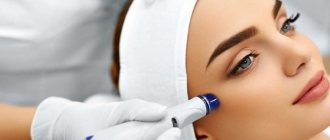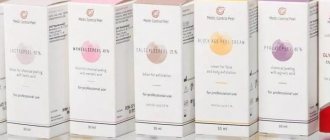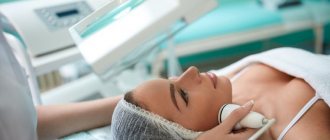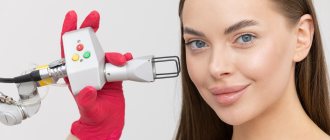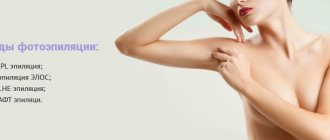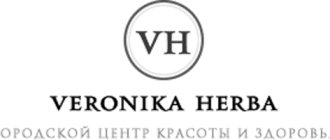Laser resurfacing or chemical peeling: which is better to choose?
Laser resurfacing or chemical peeling: which is better to choose for maximum results.
For many years in a row, chemical peels have been famous for their excellent action and results. However, with the development of laser technologies, laser technologies are confidently winning the podium. More and more beautiful women are abandoning aggressive effects on the skin in favor of a more gentle method.
What is better to choose, grinding or peeling, is up to you to decide. If you find it difficult to choose, specialists with extensive experience at Coolaser Clinic will be happy to answer all your questions.
Laser resurfacing and chemical peeling. What are the similarities?
Both methods have the same focus on the result - removing the stratum corneum of the epidermis (dead cells) and stimulating basic processes.
Why is removing dead cells from the surface of the skin so important? It's simple. In order for cells to actively renew themselves, they must not have any obstacles. The better the epidermis is cleansed from the stratum corneum, the less inflammation and the better our skin is renewed.
What's on the Internet?
Although you may have read an article about laser rejuvenation on some website, please ask all your questions directly to our doctors or administrators. The amount of “nonsense” in the vast expanses of the global network is growing very quickly.
Example: fragment from an article about laser rejuvenation.
In fact: laser resurfacing is the most “powerful” type of laser treatment; no laser procedures are performed at home (unless you have a laser device at home costing at least 5 million rubles and have a medical license); The most popular type of laser for resurfacing is the carbon dioxide CO2 laser; There is no laser birevitalization.
Only 6 lines, but so many lies! Don't trust the "internet". Trust only trusted sources like us!
Chemical peeling
Any chemical peel is divided into three categories: superficial, medium and deep. Each of them is aimed at a specific layer of the dermis.
Depending on the patient’s skin type, the appropriate active ingredient is used (usually alkali or acid):
- sensitive – glycolic acid
- dry – milk peeling
- for inflammation - salicylic acid
- fatty acid – retinoic acid
In fact, any chemical peeling is a dosed burn of the epidermis. After it heals, the cells are renewed, the skin looks soft and healthy again.
Benefits of Chemical Peels
- safety
- small percentage of complications
- eliminates inflammation
- corrects scars and scars
- removes age spots
Time: 30-60 minutes
Number of sessions: individually depending on skin type. On average 5-6 procedures .
Duration of effect: individual
Risks of complications: quite high risks when using medium and deep peels, severe pain during the procedure.
Laser rejuvenation is the most modern skin renewal procedure!
Professional cosmetologists prefer laser procedures to outdated chemical (acid) peels. The effect that is noted after laser and chemical exposure is very similar, but the possibility of various options when using wide settings of the laser device makes this procedure more flexible and applicable for more “fine” correction of the patient’s skin.
The experience of our cosmetologists (and especially Levon Chakhoyan, who is also an active plastic surgeon with a deep understanding of anatomy) allows us to promise patients truly the best results! Check out the before and after photos.
Please note that the cost of laser rejuvenation with the head doctor of the clinic, Levon Chakhoyan, is the same as with any other cosmetologist at our clinic. If you have never been to us before, we recommend taking advantage of our promotion and getting a 15% discount on your first visit!
Telephone consultation is always free!
Leave your contact, we will tell you everything and offer a discount!
Send
Thank you!
Information has been sent to the clinic administrators!
Laser peeling
Laser facial resurfacing or laser peeling is a deep cleansing, it can be compared to a medium and deep chemical peel.
Laser resurfacing or laser peeling is more gentle. Its action is based on the vaporization process. That is, dead skin cells are literally evaporated from the surface of the epidermis.
The laser wave, whose length and depth are fully programmed and controlled by the device, treats the skin area. There is water inside every cell; it completely absorbs this energy.
Why is laser facial resurfacing sometimes called fractional? After laser treatment, tiny dots - fractions - may remain on the epidermis. Fractional laser resurfacing is based on the name of these points.
What results can be expected from carbon peeling?
By eliminating hyperkeratosis, that is, the thickened upper stratum corneum of the skin, the procedure helps to align the horny scales on the surface, cleanse the pilosebaceous duct of the skin, and eliminate micro comedones.
In general, such skin looks smooth and clean, matte.
Even if there are wrinkles or creases, due to the beautiful light reflection from the surface of the skin, it looks more youthful than before the procedure.
Now that we have examined the features of the procedure, let's talk about the pros and cons of carbon peeling.
Benefits of fractional facial resurfacing
- Safely. No punctures or serious interventions
- Painless. For your comfort, we apply an anesthetic gel before the procedure. To prevent the risk of burns, we additionally blow cool air onto the area.
- Long lasting results
- Any time of year. It doesn’t matter at all whether it’s winter or summer outside. Laser facial resurfacing can be done at any time of the year and in any weather.
Fractional or laser resurfacing is an ideal way to tighten facial skin without surgery. Thanks to modern CO2 laser technologies, it has become possible to restore youth to the face without surgery.
After a course of procedures, your face will again be elastic and toned, with a healthy complexion. Laser resurfacing perfectly removes scars and scars, including post-acne. Smoothes wrinkles and gives the skin a youthful glow.
Just look at the amazing review about laser resurfacing from our patient:
Laser resurfacing reviews
Time: 10-20 minutes, depending on the sanding area
Number of sessions: on average 4 procedures, between polishings there is a break of 10-20 days
Duration of effect: up to 1.5 years
Risks of complications: virtually none
Rehabilitation: on average 7 days, on the second day you can apply makeup.
In the photo, by day before and after, skin after laser resurfacing by day:
Pros and cons of carbon peeling
Pros:
- No side effects
When compared with other types of peelings (chemical retinol dermabrasion), it becomes obvious that carbon peeling does not injure the epidermis and has no rehabilitation.
- The result of the procedure is visible immediately.
- One procedure lasts a maximum of 20 minutes (lunch time)
- Suitable for absolutely everyone!
- A painless procedure that does not require anesthesia.
- Affordable price.
- It is worth highlighting that for a specialist, the carbon peeling procedure is a great way to earn money!
A procedure in Moscow costs on average 2000-2500 rubles, a course of 5-10 procedures.
In the regions the cost will not be much lower.
Minuses:
Superficial effects within the stratum corneum of the skin require a course, just like any other manipulation in cosmetology.
Fractional laser technologies: a trade-off between effectiveness and safety
Today, the arsenal of modern dermatocosmetology has a fairly wide range of methods for correcting various aesthetic imperfections of the skin - chemical peels, mechanical dermabrasion, laser resurfacing, microdermabrasion, contouring, etc. However, new trends and technologies in the beauty industry are constantly developing and improving.
This trend is especially characteristic of hardware methods, primarily laser medicine. The use of lasers, first in dermatology and then in cosmetology, has an impressive history. Even since the advent of one of the newest methods of laser treatment - selective photothermolysis - more than 25 years have passed. The pioneers of this trend, the Americans RR Anderson and JA Parrish, predetermined the fate of fractional lasers in medicine, making them indispensable in the treatment of such aesthetic skin imperfections as capillary hemangiomas. port-wine stains, hypertrichosis, tattoos, rosacea, pigment disorders, photoaging, wrinkles, etc.
O. Sheptiy, specialist in the field of laser dermatology and surgery, chief physician of the Telos Beauty Prof. high-tech clinic, Moscow, Russia
Modern methods of skin remodeling
We live in a time when more people are living into old age than ever before. And given that many of them continue to live an active life, one of the most important problems in aesthetic medicine is the fight against aging skin.
Plastic surgery can rejuvenate the shape of the face by eliminating excess skin. However, the skin still remains changed by time (ageing) or external factors (photoaging). It is also important that most patients want to look younger without surgery.
In this case, what method should be used to influence the skin and what should happen in it for its real rejuvenation?
All methods that can be used to improve the appearance of the skin are united by one principle - they use a traumatic effect on the skin, provoking fibrosis, which subsequently leads to its tension and thickening.
Nowadays in dermatocosmetology there are three main types of remodeling effects on the skin, including:
- chemical stimulation - chemical peelings with acids (trichloroacetic, glycolic, etc.);
- mechanical stimulation – mechanical dermabrasion, microdermabrasion, mesotherapy, fillers, subcision using needles;
- thermal stimulation - laser ablation, thermal lifting using lasers and broadband light sources, radio frequency lifting, fractional methods.
Chemical stimulation
Historically, acid exfoliation (peeling) was the first method of skin rejuvenation. The principle of peeling is partial (as with superficial peeling) or almost complete (as with medium and deep peelings) destruction of the epidermis, damaging fibroblasts and dermal structures. This damage activates an inflammatory reaction (the more powerful the greater the volume of destruction itself), which leads to additional production of collagen in the skin.
However, to achieve the desired result, the epidermis has to be sacrificed when peeling. Experiments with burns have misled many, allegedly “proving” that the epidermis is a self-renewing organ that quickly regenerates over the damaged area. In this regard, peelings for some time became more and more aggressive towards the epidermis (for example, deep phenolic peeling), until finally the accumulated problems made specialists realize the depravity of this method, which ultimately leads to thinning of the skin.
Proponents of deep peeling ignored the problems that arose. Their essence was that due to the destruction of the papillae of the dermis and weakening of nutrition, the epidermis becomes thinner, and the number of cells in the spinous layer is significantly reduced compared to what it was before peeling. A decrease in the barrier function of the stratum corneum leads to a decrease in skin hydration. (Therefore, almost all patients after deep peeling experience severe dry skin for a long time) At the same time, the introduction into practice of lighter peelings (using trichloroacetic and fruit acids) did not live up to the hopes placed on them associated with effective skin tightening.
Mechanical stimulation
Among the methods of mechanical stimulation of involutional changes in the skin, dermabrasion using rotary devices (with a speed of rotation of cutters up to 100,000 rpm) deserves special attention. Currently, modern Schumann-Schreus apparatuses (Germany) are used.
The method can only be used in a surgical hospital, since the procedure requires anesthesia, postoperative treatment of the wound surface, a special toilet for the eyes and mouth, as well as devices for feeding patients (due to the fact that pronounced postoperative swelling that occurs 2-3 days after the procedure, makes it difficult to open the eyes and mouth).
The method is very effective, but, unfortunately, with mechanical dermabrasion there is a high risk of complications such as:
- persistent postoperative hyperemia;
- the appearance of areas of depigmentation due to the destruction of melanocytes when the cutter penetrates the basement membrane;
- infection of the wound surface;
- formation of scars (with excessive depth of immersion of the cutter into the skin).
All of the above has determined the limited use of this method in clinical practice.
Thermal stimulation
Ablative remodeling
Since the late 1980s, lasers have been used to rejuvenate the skin by layer-by-layer tissue removal (ablation) [4]. Careful, low-traumatic removal of the surface layer of skin using a carbon dioxide laser stimulates the synthesis of its own collagen, the amount of which increases several times after the procedure. Then its reorganization gradually occurs.
The most effective was the use of a CO2 laser, which produces a deep thermal effect on all layers of the dermis, which is externally manifested by the effect of skin tightening. The method was called “laser dermabrasion” or “laser resurfacing”, and in terms of effectiveness it could not be compared with any other method of skin rejuvenation that existed at that time (Fig. 1).
Rice. 1. Scheme of traditional laser skin resurfacing (laser dermabrasion)
However, the CO2 laser also causes a large number of complications. In addition, further studies have shown that such a deep effect on the dermis stimulates the formation of fibrous tissue to a greater extent than it promotes the synthesis of new, normally oriented collagen [5]. Developed fibrosis can give the skin an unnatural pallor. The collagen synthesized after treatment is resorbed after a few years, like any collagen formed at the site of the scar. As a result of thinning of the epidermis caused by atrophy of the papillary dermis, fine wrinkles begin to appear on the skin. Due to the weakening of the barrier function of the stratum corneum, the level of hydration of the skin decreases, and it looks atrophic.
Somewhat later, laser systems based on erbium-yttrium aluminum garnet (erbium lasers) appeared. Such advantages of the erbium laser as a smaller depth of thermal penetration (erbium lasers penetrate to a depth of 30 microns, CO2 lasers - up to 150 microns) and (as a result) a lower risk of burns and carbonization of tissue, as well as relative low cost (compared to carbon dioxide lasers) , attracted the attention of many experts around the world.
Nevertheless, as experience has accumulated in working with these two types of installations, experts have formed the opinion that CO2 lasers are more effective [6]. Despite the negative consequences of carbon dioxide laser dermabrasion described above, this method remains indispensable for the correction of acne scars. In addition, it can be considered as an alternative to surgical skin tightening - of all the methods of skin remodeling, only CO2 laser exposure can actually cause a pronounced contraction of collagen with a visible clinical lifting effect.
The problem with all the methods described above is that they often “sacrifice,” that is, significantly damage the epidermis. In order to rejuvenate the skin and really look young, you need an ideal epidermis with natural dermal papillae, good hydration, normal skin color and elasticity. The epidermis is a very complex, highly specialized organ, up to 200 microns thick, which is our only defense against the effects of negative environmental factors. Therefore, no matter what we do to rejuvenate the skin, we must be sure that its underlying normal architecture is never damaged.
This concept contributed to the emergence of non-ablative skin remodeling technology.
Non-ablative remodeling
The most common devices for non-ablative skin remodeling are neodymium (Nd-YAG) and diode lasers, as well as broadband light sources (IPL). The principle of their action - selective photothermolysis - is to heat and destroy structures containing a sufficient amount of melanin or oxyhemoglobin. In the skin, these are, respectively, accumulations of melanocytes (lentigo, melasma) and microvessels (telangiectasia). The emitted wavelengths used in non-ablative lasers correspond to the maxima of the absorption spectra of oxyhemoglobin or melanin. The treatment procedure with non-ablative lasers and IPL is quite safe, the rehabilitation period is minimal, however, such treatment only eliminates pigmentary and vascular cosmetic defects. In this case, a certain thickening of the skin is noted, but the resulting effect is short-lived.
Fractional skin remodeling methods
The constant search for new highly effective and at the same time safe methods of skin rejuvenation has led to the emergence of a revolutionary technology - fractional delivery of laser radiation. The proposed skin rejuvenation method was specifically designed to overcome some of the above difficulties. Unlike “conventional” ablative and non-ablative laser techniques, which are designed to achieve uniform thermal damage to the skin at a specific depth, fractional methods achieve selective microscopic thermal damage in the form of numerous altered columns and leave the areas around these micro-wounds unaffected. Currently, the industry produces two types of fractional lasers: non-ablative and ablative.
The first of them uses erbium optical fiber, generating radiation with a wavelength of 1550 nm. Fractional laser forms thousands and tens of thousands of microdamages in the skin in the form of columns - microthermal treatment zones (MTZ) - with a diameter of 70-150 microns and a depth of up to 1359 microns
As a result, about 15-35 pieces of skin in the treated area are subjected to photocoagulation. The chromophore for the laser is water. Coagulation occurs mainly in the lower layers of the epidermis and dermis. The stratum corneum remains intact because it contains a relatively small amount of water, and this significantly reduces the risk of infection. Epidermal repair occurs quickly due to the small volume of damage and the short distance of migration of keratinocytes. The healing period is accompanied by moderate swelling and hyperemia, followed by peeling that appears on days 5-7. The patient practically does not lose social activity.
This technology - fractional photothermolysis (FF) - is a highly effective method of non-ablative fractional skin remodeling. To achieve the desired effect, a course of treatment is prescribed. Depending on the clinical situation, it is recommended to carry out from 3 to 6 procedures with an interval of 4-6 weeks. As with any other method of non-ablative skin remodeling, the final result can be observed only 4-8 months after the procedures (cumulative effect).
In cases where a more aggressive effect on the skin is required - to correct scars, eliminate deep wrinkles and excess skin - the fractional deep dermal ablation (FDDA) method is used, combining the advantages of a CO2 laser and the fractional principle supply of laser radiation. Unlike traditional CO2 lasers, which remove the entire skin surface layer by layer, FA installations form a huge number of microablative zones (MAL) with a diameter of up to 300 microns with a vaporization depth from 350 to 1800 microns (Fig. 5).
Rice. 5. The principle of operation of the abmi.io1sh fractional laser: the formation of microablative zones -MAZ (a); dependence of the MAZ formation depth on the laser radiation power (b)
Just as with FF, from 15 to 35% of the skin of the treated area is actually exposed (in some cases, up to 70%). Recovery after the FA procedure is faster than after layer-by-layer ablation. This is due to the fact that a significant part of the epidermis and stratum corneum remains intact. Immediately after the procedure, skin bleeding is observed for some time, but it soon stops (Fig. 6 a, b).
Rice. 6. Staged restoration of the skin after the fractional ablation procedure: view immediately after treatment (a); every other day (b); after 5 days (c); 14 days (d) after one procedure
Numerous microbruises appear in the dermis, which induce a complex cascade of changes leading to the production of new collagen. After the bleeding stops, it is necessary to remove the serous fluid remaining on the surface of the skin. Its release is observed within 48 hours after the procedure, until complete epithelization of microablative zones occurs. During this period, the patient uses special wound-healing external agents. From 3-4 days, peeling usually begins and swelling intensifies (Fig. 6 c). By day 7, these phenomena gradually subside, and the only noticeable side effect remains erythema (Fig. 6 d). The duration of the existence of erythema depends on the parameters of laser exposure and the characteristics of skin vascularization. According to the author's observations, erythema lasts no more than 3 months.
The patient’s loss of social activity after the PA procedure lasts from 5 to 10 days.
To prevent scarring and the manifestation of post-inflammatory pigmentation, it is necessary to carefully care for the skin. Decorative cosmetics can be used from 4-5 days. A prerequisite for obtaining a good result is the use of sunscreen cosmetics with a high degree of protection (SPF at least 50) for at least 3 months after the procedure. The risk of post-inflammatory pigmentation is observed in 20% of patients and, as a rule, is higher in patients with skin phototypes IV-V. This hyperpigmentation is transient in nature and can last from 1 week to 3 months, which also depends on the depth of treatment and the area of the treated area. To prevent it, external agents based on hydroquinone (4%) and tretinoin (0.1%) are prescribed 1-2 weeks before the procedure and for another 2 weeks after it. The main effects on the facial skin after the FA procedure are as follows: pronounced tightening and reduction of excess skin, smoothing the surface of wrinkled skin, as well as skin affected by acne scars, reducing dyschromia and porosity.
This method was also tested by the author and his colleagues for the removal of skin stretch marks. As clinical studies have shown, the method has demonstrated high efficiency in eliminating almost all types of stretch marks, both acquired during puberty and postpartum. It was noted that the healing processes on the skin of the body proceed differently than on the skin of the face.
Mechanism of skin remodeling using fractional lasers
Let's consider the mechanisms of skin remodeling when using fractional lasers.
After laser exposure, aseptic inflammation develops in the area of formed microwounds. The more aggressive the laser effect, the more pronounced the inflammatory reaction, which, in fact, stimulates the post-traumatic release of growth factors and the infiltration of damaged tissues by fibroblasts. The onset of the reaction is automatically accompanied by a surge in cellular activity, which inevitably leads to the fact that fibroblasts begin to produce more collagen and elastin. The skin remodeling process includes three classical regeneration phases:
- phase I - alteration (tissue inflammation). Begins immediately after damage;
- phase II - proliferation (tissue formation). Begins 3-5 days after injury and lasts about 8 weeks;
- phase III - tissue remodeling. Lasts from 8 weeks to 12 months.
It should be noted that all three phases of skin remodeling are observed both after fractional photothermolysis and after fractional ablation. But in the first case, the damaging effect of the laser is moderately aggressive, as a result of which the cascade of inflammatory changes is not too violent.
A completely different picture is observed after exposure to a fractional ablative laser. The trauma caused by this laser causes the blood vessels to rupture, and blood cells along with serum are released into the surrounding tissue. A full-fledged skin regeneration mechanism is immediately launched - alteration begins - aseptic inflammation develops. Platelets released from damaged vessels play an important role in activating blood coagulation and releasing chemotoxic factors, which in turn attract other platelets, leukocytes and fibroblasts. Leukocytes, in particular neutrophils, participate in the cleansing of destroyed tissue, removing fragments of necrotic tissue, which are partially destroyed by phagocytitis, and partially emerge on the surface of the skin in the form of microscopic debris consisting of epidermal and dermal tissue substrates and melanin - microepidermal necrotic debris (MENO).
The proliferative phase begins after approximately 5 days. During this period, neutrophils are replaced by monocytes. Monocytes, keratinocytes and fibroblasts continue to influence growth factors and at the same time be under their inverse influence. Keratinocytes stimulate epidermal growth and the release of growth factors necessary to stimulate collagen production by fibroblasts. In this phase, new blood vessels are formed, and the intercellular matrix is also intensively formed.
The last, reconstructive, healing phase after fractional laser treatment lasts several months.
By day 5 after damage, the fibronectin matrix is “laid” along the axis along which fibroblasts are aligned and along which collagen will be built. An important role in the formation of this matrix is played by transforming growth factor β (TGF-β - a strong chemotoxic agent for fibroblasts), as well as other growth factors. The main form of collagen in the early phase of wound healing is type III collagen (this type of collagen is located in the upper layer of the dermis, just below the basal layer of the epidermis). The longer the alteration phase, the more type III collagen will be produced, but in any case its amount increases extremely from 5 to 7 days after injury. Over the course of about a year, type III collagen is gradually replaced by type I collagen, which increases the strength of the skin. Blood supply gradually normalizes, the skin becomes smoother and acquires a natural color.
Comparative analysis of laser methods of skin remodeling
Summarizing the above, we present to your attention a diagram demonstrating the relationship between the effectiveness and safety of laser methods of skin remodeling.
Advantages of fractional methods of track rejuvenation. The advantages of fractional methods used in clinical practice include:
- controlled minimal damage to the skin. Histological studies performed after the procedure show an increase in the number of papillae in the dermis, which characterizes the changes that have occurred in the skin as productive regeneration;
- its effective rejuvenation: the skin becomes thicker, the production of collagen and elastin increases significantly (by more than 400% (!));
- short healing time: on average 3 days after FF and 7-14 days after FA;
- minimal risk of hyperpigmentation;
- the possibility of performing the procedure on patients with thin skin;
- the ability to have a therapeutic effect on any part of the body;
- the possibility of using lighter types of anesthesia: with fractional photothermolysis, only local application anesthesia is used; for fractional ablation, a combination of conduction and infiltration anesthesia is required;
- disappearance of telangiectasia (due to the fact that blood vessels rupture in so many places that their restoration is impossible).
Main indications for fractional treatment methods
Indications for fractional photothermolysis:
- increase in skin density in the early stages of aging. The FF procedure is relatively easy and can be performed without fear. The therapeutic effect can be exerted on the neck, décolleté, arms, abdomen, thighs, and mammary glands;
- skin photoaging;
- hyperpigmentation, melasma;
- hypertrophic scars;
- stretch marks.
Indications for fractional ablation:
- wrinkles of varying degrees of severity - from fine lines to strongly pronounced ones (in the form of furrows);
- age-related loss of skin elasticity and firmness;
- excess skin in the eyelids, neck, face (as an alternative to plastic surgery);
- uneven skin texture;
- pronounced photoaging of the skin;
- scars after acne;
- cicatricial deformation of the skin after injuries, operations;
- hyperpigmentation: melasma, lentiginosis, mottled pigmentation, etc.;
- vascular dyschromia;
- skin stretch marks;
- actinic keratosis.
Rice. 11. Hypertrophic scars. View before (a) and 6 weeks after (b) treatment using the fractional photothermolysis method
Rice. 12. Postpartum stretch marks. View before (a) and 4 weeks after (b) the third fractional photothermolysis procedure
Rice. 13. Striae after prolonged use of hormonal ointments. View before (a) and 6 weeks after (b) the fifth fractional photothermolysis procedure
Fig 14. Photoaging. View before (a) and 2 weeks after (b) fractional ablation procedure
Fig. 15. Post-acne scars. View before (a) and 2 months after (b) the fractional ablation procedure
Rice. 16. Post-traumatic hypertrophic scar. View before (a) and 5 weeks after (b) fractional ablation procedure
Rice. 17. Postpartum stretch marks. View before (a) and 3 weeks after (b) fractional ablation procedure
Rice. 18. Pubertal striae. View before (a) and 2 months after (b) fractional ablation procedure
In conclusion, a few words about the prospects for using laser technologies in aesthetic medicine. We must give credit to manufacturers for beginning to pay more attention to the safety of treatment procedures using lasers. Technologies have constantly evolved. However, quite often the safety of the method was sacrificed in order to increase its effectiveness. Or vice versa. A compromise was found in a new principle of delivering laser radiation to tissue. It is worth noting that the types of lasers remained the same: erbium, carbon dioxide, neodymium. This suggests that:
- firstly, laser skin remodeling is recognized as the most effective today;
- secondly, the breadth of coverage of aesthetic and dermatological problems solved using these methods is extremely large - from skin rejuvenation to the treatment of congenital and acquired skin pathologies;
- thirdly, with the advent of fractional technologies, the safety and effectiveness of treatment have become predictable.
A modern aesthetic medicine clinic is a high-tech clinic in which modern laser equipment plays a leading role. And, most importantly, to professionals.
Based on materials from the journal Aesthetic Medicine, 2009.
Rehabilitation period after procedures
With superficial peeling, all unpleasant symptoms disappear within 2 hours, so rehabilitation is not necessary in this case. After the middle look, it will take 1-2 days for the redness to go away, and after 18 days the skin will be completely restored. The deep technique requires long and serious rehabilitation. The patient remains in hospital for several days under the supervision of a doctor, and complete restoration of the skin occurs only after 6 months.
After the procedure, patients need special care to maintain the effect. It will help avoid complications.
Laser stain removal does not require long rehabilitation. 1-2 days are enough for possible hematomas, swelling, itching and redness to disappear. After 10 days, the skin will be completely restored. During this time, it does not require special care, you just need to use moisturizing and nourishing cosmetic products.
When should laser skin treatment be considered?
A dermatologist examines the skin to make treatment recommendations.
If you are particularly concerned about hyperpigmentation, rosacea, acne scarring, or any other skin condition, you should discuss treatment options with a dermatologist. They will recommend the most suitable treatment for your skin. There are several effective dermocosmetic skin care products you can try before laser therapy for rosacea or hyperpigmentation.
- Mesalter line provides immediate and long-lasting comfort and relief from redness for skin prone to couperose and rosacea.
- For hyperpigmentation problems such as age spots, sun spots and acne marks.
It is clinically and dermatologically proven to reduce dark spots and prevent their reappearance. The first results are visible after two weeks and the results continually improve with regular use. If you do decide to undergo laser therapy, keep in mind that it is most effective on pale skin. Laser therapy can also have side effects and cause post-inflammatory hyperpigmentation.
In preparation
Cosmetologists recommend not sunbathing in the sun 4 weeks before the acid and laser peeling procedure and protecting the skin from exposure to ultraviolet radiation. In addition to the general rules, 3 weeks before chemical peeling, patients use preparations that contain the same acids as in the cosmetic product for basic cleansing. Gradually, the skin gets used to the action of these substances, the keratinized surface weakens and softens. This adaptation enhances the penetration of acid during the session.
How does laser treatment work?
Different lasers do different things, but they all work the same way. Intensely focused light supports old, damaged skin at the cellular level. From there, the laser heats and damages the deeper layers of the skin. But don't worry, it's truly a fantastic thing. Lasers cause your body's skin systems to go into ultra-healing mode. When skin cells are damaged by the laser, your body responds by producing anti-aging collagen. Thus, this laser therapy improves your skin texture and overall appearance of any skin type. After recovery time, your skin will become smoother, brighter, even and firmer, especially if you prepare and treat your skin with our skin repair cream. Recommended by dermatologists around the world, this incredible formula directly supports collagen and elastin production in your cells, speeding recovery and making laser treatment results even longer lasting.

